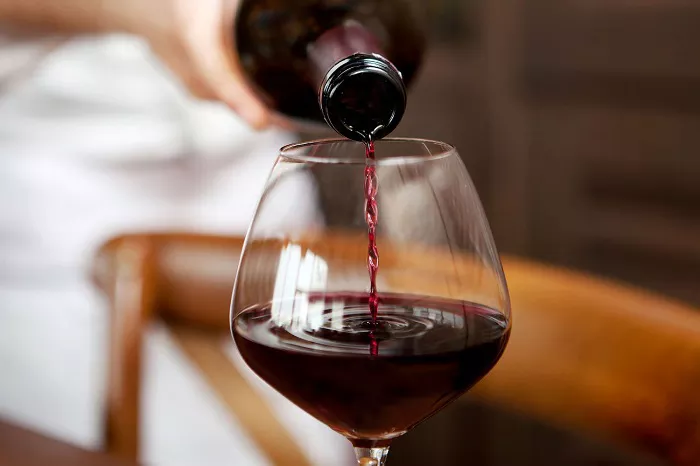The Bordeaux 2024 en primeur campaign has officially launched, but a sluggish start and modest price reductions are casting doubts on whether this year’s wines will generate the enthusiasm needed to reverse the underwhelming 2023 performance.
Leading the early releases were Pauillac Fifth Growths Château Pontet-Canet and Château Batailley, alongside Saint-Julien’s Château Branaire-Ducru. Despite hopes that a fresh campaign would reignite collector interest, early reports from Bordeaux paint a disappointing picture. Pontet-Canet’s release was widely seen as a failure, with Branaire-Ducru sparking little excitement and Batailley only selling gradually.
While some analysts acknowledged that the prices — down roughly 10 percent from 2023 — were reasonable, they weren’t compelling. Pontet-Canet’s release at £60 per bottle and Batailley’s at £26 failed to produce the kind of shock or urgency that spurs buyers into action.
Expectations had been higher: with 2024 considered a step down in quality from stronger recent vintages, many believed a more aggressive price cut would be needed. Additionally, the lukewarm reception of the 2023 vintage signaled that simply repeating previous pricing strategies would not be sufficient.
A reluctance to slash prices further may stem from producers’ belief in the intrinsic quality of their 2024 wines or from concerns about undermining the market value of other vintages still on shelves. Yet critics argue that discounted pricing on less-celebrated vintages would actually stimulate broader interest and energize the en primeur market.
Vintage Quality: A Mixed Yet Promising Picture
Despite pricing frustrations, the wines themselves offer promise. Critics and experts, including those from Wine-Searcher, have begun sharing detailed tasting notes, with attention now shifting to assessing the quality of wines across the Médoc’s key northern communes: Saint-Estèphe, Pauillac, and Saint-Julien.
Tasting notes from 2024 show a notable shift toward purity of fruit, particularly cassis and blackcurrant — hallmark flavors of Pauillac and Saint-Julien — but without the leafy greenness of previous vintages. Advances in viticulture and winemaking, including selective harvesting and expanded vat capacities, have enabled greater precision, ensuring fruit ripeness and balance even in a challenging vintage.
Some estates, such as Léoville-Las Cases, benefited from new wineries and fermentation facilities that allowed parcel-by-parcel vinification. Others, like Calon-Ségur, employed innovative maceration techniques such as R’Pulse, which gently break down grape skins to avoid harsh tannin extraction.
Subtle Use of Chaptalization and Saignée Methods
In response to climatic pressures, limited chaptalization was employed judiciously to raise alcohol levels slightly — typically by 0.2–0.3% — helping balance lean Merlot lots. Similarly, saignée was used to concentrate weaker lots, resulting in wines that maintained freshness and structure without tipping into austerity.
Harvest timing also played a role: estates that picked into mid-October often showed better balance than those that harvested earlier.
Pauillac: A Return to Classicism
In Pauillac, the 2024 wines are described as classically styled, with pure cassis, graphite, and restrained oak. Among First Growths, both Mouton Rothschild and Lafite impressed — the former for its vibrancy and seamless balance, and the latter for its definition and restraint.
Pichon Comtesse outshone Pichon Baron with its precision and finesse, while Lynch-Bages stood out with its freshness, structure, and density. Grand-Puy-Lacoste emerged as a strong value play, offering elegant red fruit and smooth tannins at a lower price point.
Traditionalist Château Batailley produced a structured, restrained wine that opened slowly but developed beautifully with time in the glass. Meanwhile, Lynch-Moussas and Pedesclaux continued their upward trajectory, offering modern, balanced expressions of Pauillac.
Saint-Estèphe: Finesse and Red Fruit Charm
Saint-Estèphe wines in 2024 display uncommon delicacy and finesse. Château Montrose produced a standout wine of richness and elegance, while Calon-Ségur delivered a refined cassis-driven expression with subtle cedar and graphite.
Château Phélan Ségur again exceeded expectations, as did its second wine, Frank Phélan, which showed surprising quality and openness. Lafon Rochet impressed with its mix of concentration and fresh red-fruit lift. From just beyond the appellation, Château Sociando-Mallet delivered a poised, balanced wine.
Saint-Julien: Precision and Elegance
Saint-Julien produced some of the campaign’s most refined wines. Léoville-Las Cases dazzled with its poise and structure, while Ducru-Beaucaillou revealed its depth only after extended time in the glass — a common theme in 2024 wines.
Léoville Barton offered its signature structure with ripe cassis and licorice, while Langoa Barton narrowed the quality gap with its more prestigious sibling through its firm structure and freshness.
Beychevelle also delivered an outstanding wine marked by clarity, density, and fine tannins — a highlight of the commune.
Conclusion: Quality Present, But Pricing Holds Back Enthusiasm
The 2024 vintage across the northern Médoc presents a range of well-made, balanced, and expressive wines. Yet producers’ reluctance to cut prices more meaningfully — particularly following the underperformance of 2023 — risks suppressing demand.
For Bordeaux’s en primeur campaign to thrive, it may take more than moderate markdowns. Collectors and trade buyers alike are watching closely to see whether producers adjust their pricing strategies to reflect both market expectations and vintage realities.
You Might Be Interested In:


